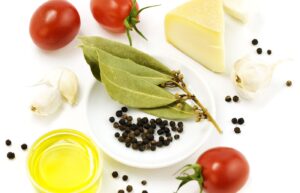+86 571 8659 2517
+86 180 5841 8258
info@zmuni.com

In China, a new food ingredient refers to any food ingredient or substance that has not been previously used or approved for use in food products within the country. To ensure safety and compliance, new food ingredients must undergo a rigorous evaluation and approval process before they can be used in food products. ZMUni Compliance Center has compiled an overview of the acceptance and approval of new food ingredients in China for the first half of 2024 for your reference. | Approved Ingredients As of June 30, 2024, China NHC has issued one announcement (No. 2 of 2024)

On July 8, 2024, China's National Medical Products Administration (NMPA) announced the full implementation of electronic submission for cosmetics (including toothpaste) and new cosmetic ingredient (NCI) registration and filing materials. This measure will be officially implemented starting September 1, 2024, with a transition period provided to ensure it does not disrupt companies currently applying for registration and filing. The electronic submission requirements will improve the cosmetics and NCI registration and filing process. Companies will no longer need to mail paper documents, as the process can be handled electronically. This change will reduce the effort companies must exert and lower

On July 8, 2024, the China National Institute for Food and Drug Control (NIFDC) released four technical guidelines aimed at enhancing cosmetic safety assessments. These guidelines include: 1. Technical Guidelines for Cosmetic Stability Assessment 2. Technical Guidelines for Preservative Effectiveness Testing of Cosmetics 3. Technical Guidelines for Compatibility Assessment of Cosmetic Packaging Materials 4. Technical Guidelines for Application of Skin Sensitization Integrated Testing and Assessment Strategies In conjunction with these guidelines, the NIFDC also released four corresponding Q&A documents to provide further clarity. The goal of these publications is to guide the industry in improving its cosmetic safety assessment

China Food Regulatory Updates On June 7, 2024, China's State Administration for Market Regulation (SAMR) issued the Work Specifications for the List of Non-Edible Substances That May Be Added to Food, aiming to ensure the necessity, scientific validity, and feasibility of the list of non-edible substances allowed for food additives by: a) establishing an expert committee; b) regulating the procedures for collecting and reviewing suggestions on additions or revisions to the list. This is intended to standardize food safety management. On June 14, 2024, the National Center for Food Safety Risk Assessment (CFSA) issued a public consultation on the new food ingredient

China Cosmetic Regulatory Updates | New Cosmetics Ingredients In June 2024, 9 new cosmetic ingredients were filed with the China National Medical Products Administration (NMPA). They include: Ingredient Name in CN & EN Filing No. Filer in CN 3羟基丁酸甘油酯 (Glyceryl Hydroxybutyrate) 20240038 浙江华睿 二氢槲皮素 (Dihydroquercetin) 20240039 广东芭薇 金耳(NAEMATELIA AURANTIALBA)子实体提取物 20240040 广州嘉创 补骨脂酚 (Bakuchiol) 20240041 维琪科技 羟基四氢甲基嘧啶羧酸 (Hydroxyectoin) 20240042 浙江华睿 环四肽-24氨基环己烷甲酸酯 (Cyclotetrapeptide-24 aminocyclohexane carboxylate) 20240043 维琪科技 总状绿绒蒿(MECONOPSIS RACEMOSA)提取物 20240044 贝泰妮 维生素K2 (MENAQUINONE-7) 20240045 双骏生物 岩藻糖基乳糖 (FUCOSYLLACTOSE) 20240046 一兮生物 The technical requirements for the 9 new cosmetic ingredients mentioned above have not been disclosed, and they have not yet entered the

On June 27, 2024, the China National Health Commission (NHC) issued a solicitation letter seeking public opinions on 14 national food safety standards. These include four product standards, five food additive standards, three operation and hygiene criteria, one testing standard, and notably, the GB 7718 General Standard for the Labeling of Prepackaged Foods. Comments are welcomed until August 26, 2024. On June 28, 2024, the China State Administration for Market Supervision (SAMR) released the consultation on the Administrative Measures for Supervision of Food Labeling (Draft), aiming to regulate the labeling practices of food producers and operators, enhance the supervision

China Food Regulatory Updates In May 2024, the National Health Commission (NHC) of China issued 22 acceptance cases of “three new foods” (new food ingredients, new food additives, and new food-related products). The following table does not include new food-related products. Type Status Number Name New food ingredients Cases newly accepted 6 Lemon Myrtle Pyrroloquinoline quinone (PQQ) disodium salt Camelina sativa seed oil Erythrothioneine Cis-15-Nervonic acid Bacillus subtilis QK02 New food additives Cases newly accepted 12 Fructo-oligosaccharide Anisole Hydroxycitronellal Sodium cyclamate Sodium N-cyclohexylsulfamate 3-Fucosyllactose 2’-Fucosyllactose Glutamine transaminase β-glucosidase Lipase Lacto-N-tetraose Curdlan Gum Cases open for public opinion 4

China Cosmetic Regulatory Updates | New Cosmetics Ingredients In May 2024, 8 new cosmetic ingredients were filed with the China National Medical Products Administration (NMPA). They include: Ingredient Name in CN & EN Filing No. Filer in CN 乙酰基二肽-1 20240030 山东济肽 金线莲(ANOECTOCHILUS ROXBURGHII)提取物 (ANOECTOCHILUS ROXBURGHII EXTRACT) 20240031 福建片仔癀 马来酸大豆油甘油酯/辛基十二醇酯 (Maleated Soybean Oil Glyceryl/Octyldodecanol Esters) 20240032 Ashland Inc. RGD酰胺化透明质酸 20240033 陕西佰鸿 杯芳烃8A-12C 20240034 苏州隽德 AMPS/HEMA交联聚合物 (AMPS/HEMA Crosspolymer) 20240035 斯高特巴德 山桐子(Idesia polycarpa) 果/籽油 20240036 中林油 短绒野大豆(Glycine tomentella)根提取物 (GLYCINE TOMENTELLA EXTRACT) 202400307 森田药妆 The technical requirements for the 8 new cosmetic ingredients mentioned above have not been disclosed, and they have not
+86 571 8659 2517
+86 180 5841 8258
info@zmuni.com